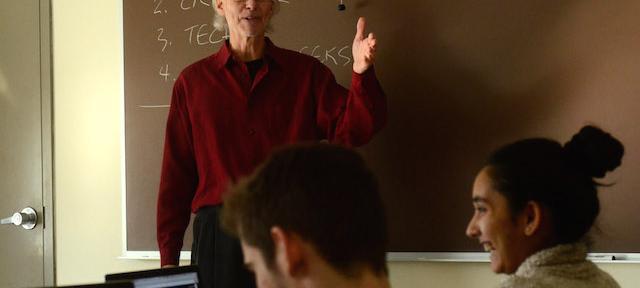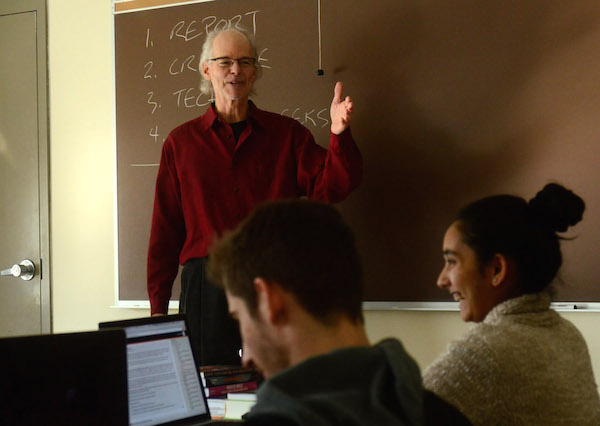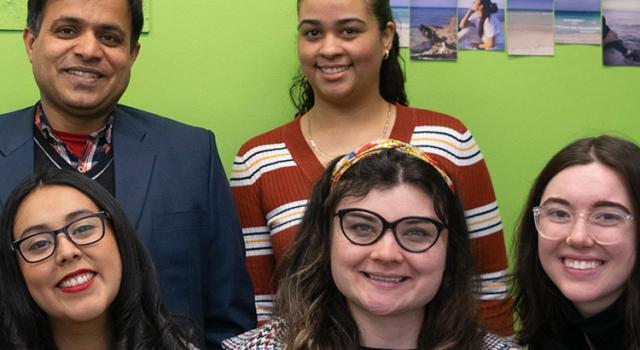From car radios to hotspots: Students in Media In Cars amassing public archive

Hampshire College students are amassing an online archive documenting the history of automobile media, from car radios to Wi-Fi, that has shaped the evolution of car culture and experience. The new course Media In Cars is taught by Professor James Miller, whose research on emerging media dates back to the earliest years of the American automobile.
“My argument is that the car is a case study in the way media move into a space and take it over,” says Miller. “In the seminar, we’re trying to collect the evidence to back that up. That is the practical goal of the archive, but in building it, students are also learning how to use technology as a means of collaborating.”
Nine students are enrolled and will be contributing images and other material to what the class plans to be a publically accessible archive. One group—Nick Lee, Josh Singer, and Mount Holyoke College student Tara Patel—is working on a project they’ve titled “Present and Future Media in Cars.”
They say that despite the ubiquity of automobiles, they’re discovering that the research isn’t easy. “We’ve found that a lot of the information has disappeared or is stored within companies,” says Lee.
Patel, a physics major with a studio arts minor, has previously taken a hands-on course in building a Formula Hybrid race car at Dartmouth College’s Thayer School of Engineering. She says she saw Media in Cars as an interesting continuation of her automobile studies toward her goal of one day designing cars.
Miller’s seminar is supported by a Five College Blended Learning grant funded by the Andrew W. Mellon Foundation. The technical aspect of the class is what ties into the grant: blended-learning courses use technology to enhance the classroom experience with online components. Asha Kinney, assistant director of IT for Technology, Teaching, and Learning, is working closely with Miller and assisting students with technical questions and problem-solving.
The class is split into three groups, with much of the collaboration accomplished online. The innovative approach to technology is one of the reasons why Justin Byler, whose academic focus is architecture, decided to take the class. He says he saw it as an opportunity to learn more about project-management applications such as Trello, which many of the Media in Cars students are using to keep in touch with their groups beyond the classroom.
Miller says he has never taught a class like this before, and he’s learning as much from the students as they are from him. “These are accomplished students,” he says. “I hope the technology lets them research the subject matter and manage their group projects independently. Students are able to design the course however they want, really. We set loose goals, but let them do their thing and run with it.“
TreaAndrea Russworm, Five College Blended Learning facilitator and an assistant professor of English at UMass Amherst, says the results of blended-technology courses will influence the future integration of technology in classrooms.
“These classes are exciting,” she says, “as the Mellon Foundation is very interested in finding out what faculty and students at liberal arts colleges such as Hampshire will do with this technology.”
Faculty from across the Five Colleges promise to benefit from those who receive blended-learning grants, who are asked to share their experiences with colleagues. Nate Therien, director of academic programs for Five Colleges Inc., says the goal is to use the experimentation to come up with lasting changes to classrooms throughout the colleges. Another round of blended-learning grants will be awarded this spring.
In the meantime, the excitement Miller sees from his students has him feeling enthusiastic about the course and the prospects for results. “We’re going all out. Maybe we’ll fall on our faces,” he says, “but we’ll learn something from it.”




